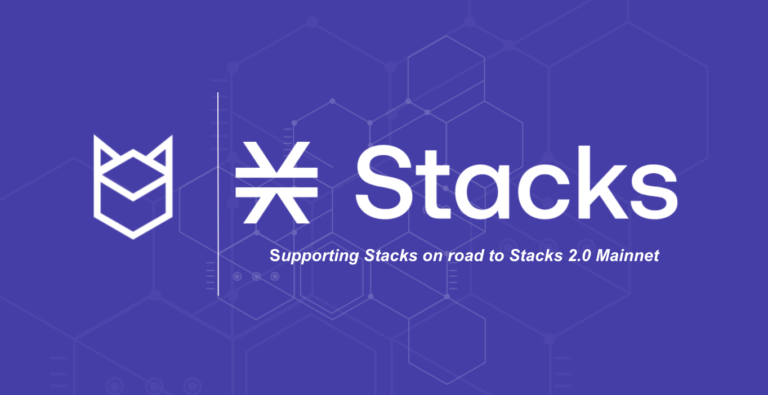
The Stacks (STX) protocol introduces a programmable layer to Bitcoin. This second layer builds on and extends Bitcoin’s functionality and scalability without altering any of its core code. Developers can use Stacks to create Dapps, smart contracts, and digital assets that share Bitcoin’s security and decentralization.
Notably, Stacks operates as a separate entity of Bitcoin but leverages the token for its core process. For example, Stacks’ transactions settle on the Bitcoin blockchain and the network nodes earn rewards in Bitcoin. Additionally, Bitcoin operates as the reserve asset for the platform.
What Problems Does Stacks (STX) Attempt to Fix?
One of the main problems that Stacks (STX) reduces is the inherent limitations of the Bitcoin ecosystem. Stacks alliviates these concerns through the use of the Proof of Transfer consensus mechanism, microblocks, and a new programming language called Clarity. Bitcoin, as the world’s first successful cryptocurrency, remains a pioneer in the market. However, the coin entered the market long before smart contracts and DeFi functionalities.
Bitcoin’s creator, Satoshi Nakamoto, purposely used a limited programming language to make it difficult for hackers to insert malicious code unnoticed. This code was great for security but couldn’t support today’s top crypto features. The Stacks second layer solution enables developers to leverage the best aspects of Bitcoin including its liquidity and security with the programmability of a fourth-generation blockchain.
Lack of Security
The market is full of new DeFi platforms. These networks promise high rewards but lack the decentralization and security track record of Bitcoin. Stack (STX) developers can now provide these requirements to users. Notably, all Stacks transactions are batched and hashed on the Bitcoin blockchain. Consequently, all Stacks transactions can be verified on the Bitcoin blockchain.
Scalability
Another major issue that Stacks (STX) reduces is scalability concerns. Bitcoin’s network can get slow and unresponsive during market congestion. The price of transactions can become ridiculous during these moments. During the 2017 breakout year for Bitcoin, the network suffered from crushing fees. Stacks developers wanted to avoid this issue in the future. As such, they enable the network to scale independently of Bitcoin.
Developer Restrictions
Stacks developers enjoy the convenience of a composable and dynamic building infrastructure. The platform enables developers to build on top of each other’s apps and include Bitcoin-based logic. These features are driving a new type of Dapp that is more secure and leverages Bitcoin’s stellar reputation and history.
Benefits of Stacks (STX)
Stacks (STX) is an open-source project that has been vetted by the community. The main benefit of Stacks is that it empowers Dapp developers to make decentralized apps and smart contracts that inherit all of Bitcoin’s powers. Developers can leverage aspects such as Bitcoin’s liquidity to create a better user experience.
User Experience
Speaking on the user experience, Stacks provides a more secure and profitable market. For example, all data is owned by the user. Users can even share this data between apps in a decentralized nature.
How Does Stacks (STX) Work
Stacks is a dual-layer Bitcoin programmable solution. One of the core concepts of the platform is that Dapps are deployed on Stacks and settled on Bitcoin. The introduction of the Clarity programming language has helped drive the adoption of the network. This language is highly predictable which helps to reduce bugs. Notably, Clarity integrates a familiar web 2.0 user experience for non-technical users.
Stacks (STX) Blockchain
The Stacks blockchain operates as a flexible layer that resides on top of Bitcoin. It enables decentralized apps, smart contracts, and digital assets to be created, tested, and launched.
Stacks 2.0 blockchain
The stacks 2.0 blockchain provides some cool DeFi features. Anyone can use this system to create new tokens. New tokens provide businesses and groups with new ways to monetize open-source protocols and incentivize community contributions.
STX
STX serves a few roles within the Stacks protocol. It’s the network’s native utility token. You will need to hold STX to execute smart contracts and run Dapps. Developers pay a small fee to publish smart contracts to the blockchain in STX. You can also use the token as a cryptocurrency and send value in a peer-to-peer manner globally.
Stacks (STX) Consensus
Stacks (STX) leverages the Proof of Transfer (PoX) consensus mechanism. This custom-built protocol connects the Bitcoin and the Stacks network. The system does away with traditional Bitcoin miners. Instead, Stackers transfer Bitcoin to nodes providing computational services to the network.
This form of consensus is far more energy-efficient and faster than Bitcoin’s Proof-of-Work system. Additionally, anyone can participate in the network. There is no special hardware or expensive mining rigs needed. This strategy helps to promote decentralization which keeps the network controlled by users.
DeFi Support
This month will see Stacks’ first DeFi project launch. The Arkadiko Protocol wants Bitcoiners to be able to cash in on the DeFi movement. The platform enables Bitcoiners to earn a yield by collateralizing a next-gen stablecoin.
Final Word
Stacks (STX) demonstrates how developers’ creativity continues to expand. The platform takes the best aspects of Bitcoin and combines it with the most recent cryptocurrency advancements. For Bitcoiners and DeFi users, this is a major milestone. For these reasons and many more, Stacks is set to see continued popularity in the market.



















